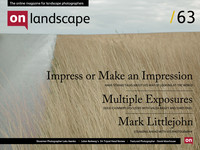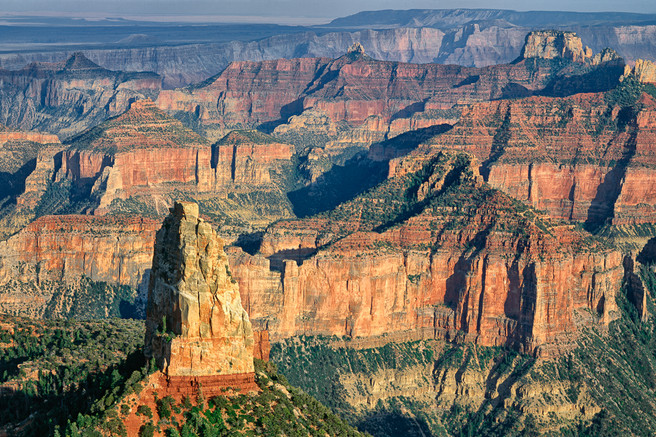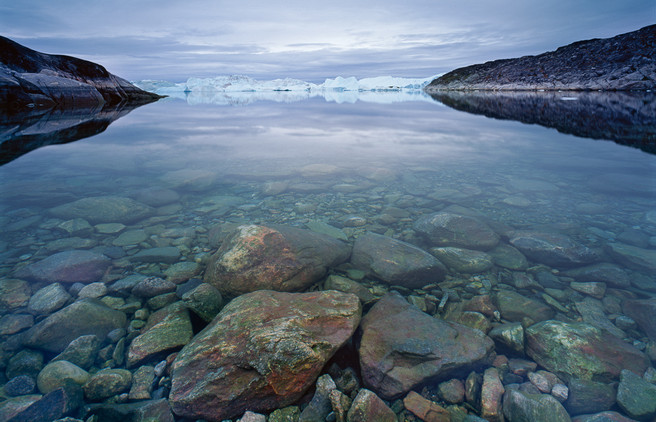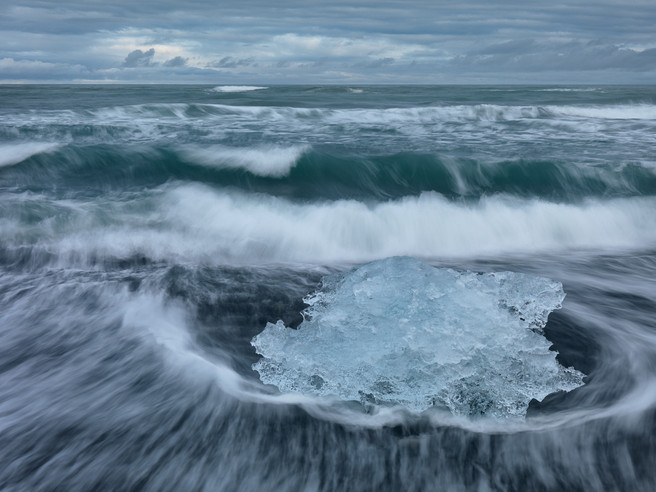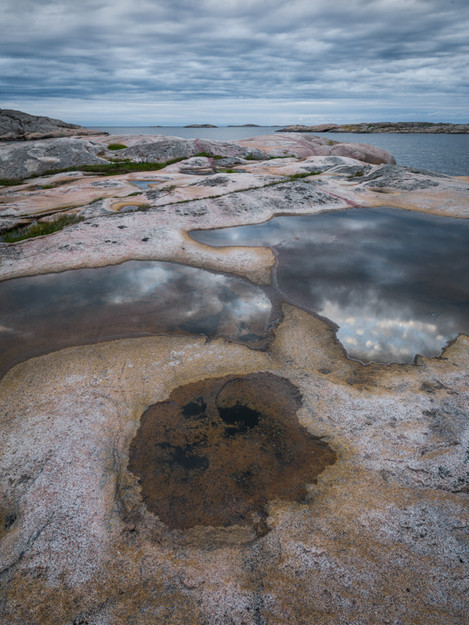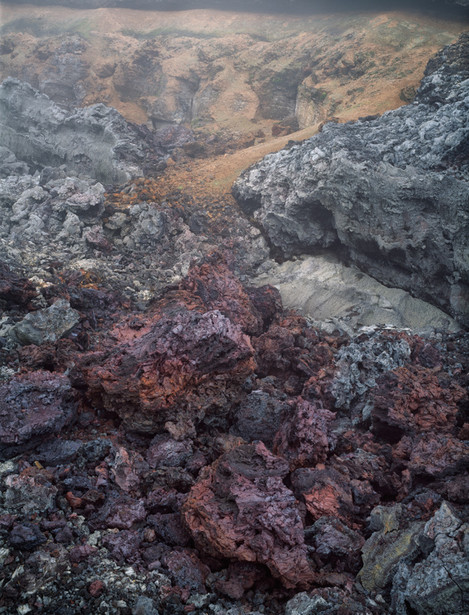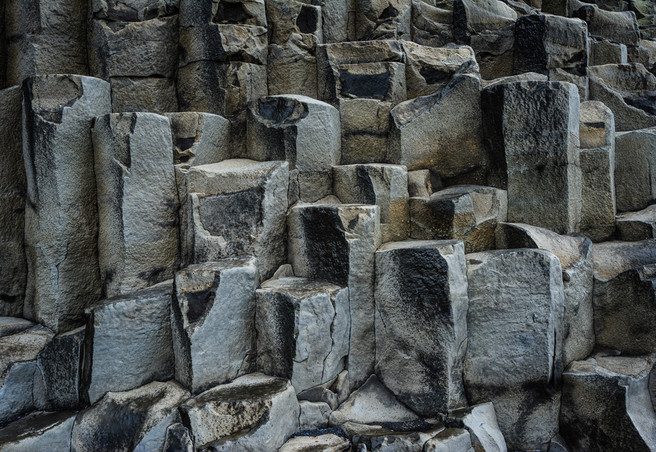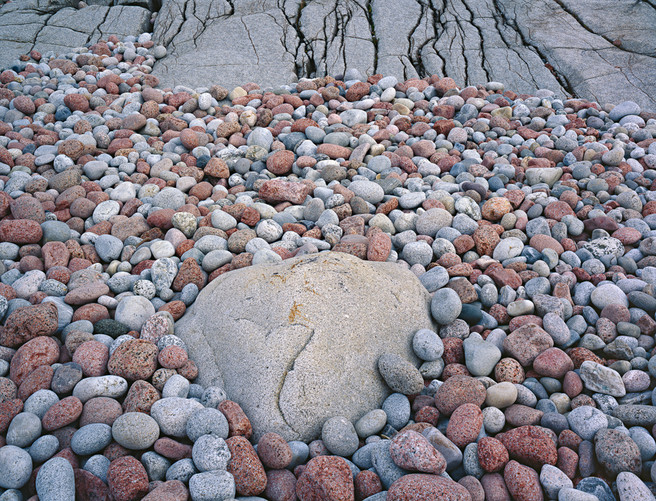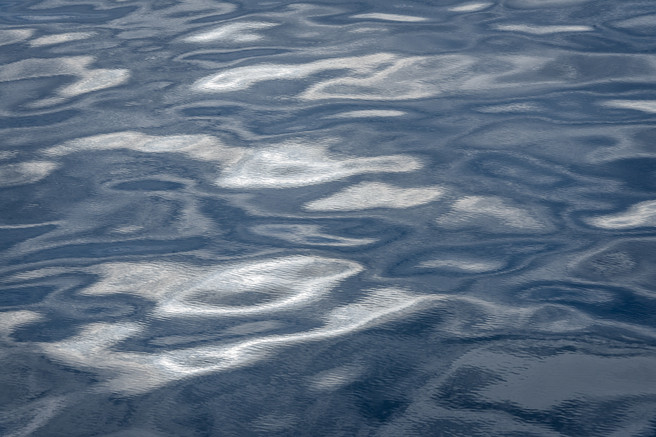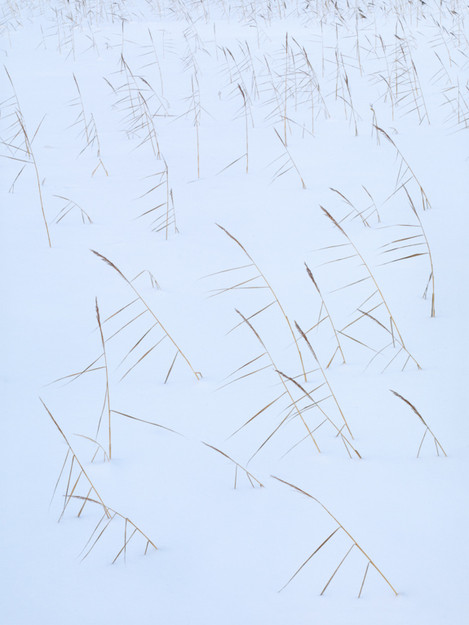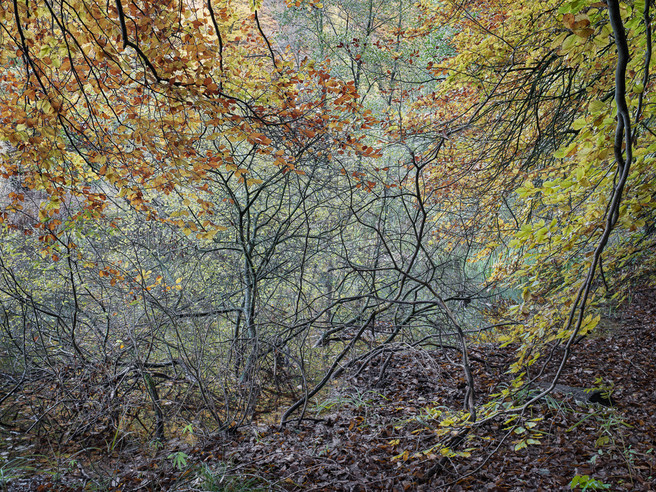Looking the Other Way

Hans Strand
Hans Strand is an internationally recognised photographer who has received numerous awards for his work and published three books. He lives near Stockholm in Sweden.
I am writing this first short article to try to put some perspective on how viewers are evaluating landscape photography. In my mind, the majority of landscape photographs shown on the internet are made to impress rather than to make an impression on the viewer. With that statement, I mean that way too much focus is spent on sensation rather than on subtlety. The classic approach is to use early morning or late evening sunlight to boost the image. The more sensational sky phenomena the better image. Personally, I think that approach is too romantic, too sweet and also not an honest interpretation of the landscape.
Nature has a serious element. It plays its game completely out of control by human hand and by making it too charming and romantic it is losing its real spirit. I used to go to Iceland at least once per year and I often hear colleagues worrying about the weather before they go to there. Unstable weather is an important ingredient in the Icelandic landscape and romantic sunrises and sunsets are rare. During my 18 years of travelling to Iceland, I have almost never had any problems with the weather. I try to use rain, wind, no wind, overcast, sunlight, fog or what ever mother nature has to offer. If you have a problem with weather it is mostly as a result of rigid thinking.
Like indigenous people living close to nature, a landscape photographer has to adapt to what is on the menu for the day. Why do we have to shoot for sensation? Is it because we want lots of likes on Facebook? Is a quiet landscape considered banal? Composition and interpretation of a landscape is far more important than being blessed by enhancing light. To interpret a complex landscape and to make an intellectual composition, you need to take your time to analyse what is in front of you. That time seems seldom spent. More time is spent on waiting for “good light” rather than on finding satisfying compositions. Too seldom do I see subtle images reflecting the spirit of somebody's seeing and understanding of nature. To be impressed by a photograph of The Grand Canyon at sunset is not a sign of a developed ability of understanding landscape photography. Of course, Grand Canyon is one of the greatest natural wonders of this planet. It is fantastic to see and to experience, but almost impossible to justify in a photograph. At sunset, the control lamps are blinking red and it is like eating one kilo bananas and ice cream. It is definitely impressive but does an image of this leave any lasting impression?
With this short article, I want to open photographers and viewers eyes to the subtle things in nature, to encourage photographers to look away from the obvious. I had a decisive experience of this in 1990 when I visited Grand Canyon for the first time. I found some interesting tree roots on the rim and had my camera pointed 180 degrees away from the canyon. While working on a composition some passing visitors stopped by and told me that the canyon was in the opposite direction. From that moment and experience, this has been my personal approach to the most of the places I am visiting. Interpretation of a landscape is far more interesting when it opens doors to the unexpected rather than an impressive registration of a great natural wonder. In The South West U.S.A. photographers are more or less standing in line to shoot the icons at sunrise and sunset. That approach only generates predictable images and the surprise factor is equal to zero, no matter how colourful the sky is.
North Rim of Grand Canyon at sunset
This might be an image of an impressive landscape, but what differs this image from any another Grand Canyon image? Absolutely nothing. Certainly a lot of travelling just to get a standard image. We have seen this way too many times already. I personally fell into the trap this time.
Icefjord, Greenland, July 1997
Here I was not at all blessed by any enhancing light. It would even, by many, be described as boring light. However I found this calm bay with crystal clear water and let the main attraction, the icebergs in the background be “the supporting actor”. I concentrated my attention on the submerged rocks in the foreground. I used a polarizer to eliminate some of the reflections and to better see the rocks and a light graduated ND-filter to balance the brighter sky. The photograph is most definitely not impressive, but I think it can make some impression with its tranquil mood.
“Ice & Sea”, Iceland, June 2013
Another photograph without spectacular light which was grey and had no direction. This situation gave me time enough to figure out how I wanted to make the composition. I wanted to work with just one iceberg and I wanted the water to flow backwards towards the sea ( this makes a better motion in the picture than the other way). I also did not want the iceberg to interfere too much with the white foam on the breaking waves in the background. After some 10 minutes I got what I wanted. This was accomplished completely from my composition strategy only. The light was here left without any consideration. The exposure was one second at f/16. The grey light in combination with a moderate motion blur gave the image its impressionistic character.
“Calm Day”, Ramsvikslandet, Sweden, September 2011.
I normally want some motion of the ocean when I go for shooting along the coastline. In this case there was no action at all. The light was also grey and in lack of direction. Instead of giving up I started to look for the opposite of action. There were many shallow pools filled with rain water on the cliffs and I used one of them as an eye catcher in the foreground. The static composition emphasised the calm atmosphere.
Krafla, Iceland, July 1995
This image of pumice was shot during pouring rain. Instead of staying in the car and moaning about the wet conditions I tried to make something out of the situation. I used a plastic bag to protect my camera from getting soaked. The soft and warm colours the of the pumice got my attention and I worked out this quiet volcano shot. The mist appeared when the water drops evaporated on the warm volcanic ground. Krafla erupted in the mid 80-ties but the ground was still warm when I was there in the summer of 1995.
“Basalt Wall”, Iceland, Augsust 2012
This shot of basalt columns is a typical example of the kind of photography you can make in overcast conditions. The contrast was fairly low when I made the exposure, but I was able to work out a very dynamic tone scale in the post production. This by stretching the histogram to reach both ends of the tone scale.
Pebbles, Trysunda Island, Sweden, July 2000
Trysunda Island is located outside “The High Coast” in The Gulf of Bothnia. One of the beaches are filled with round and multicoloured pebbles. Here I looked for something disturbing the monotone pattern of stones. I found one stone larger than the others and used a central composition to give the photograph more attitude. The light was grey and allowed the colours of the the pebbles to come out in a very subtle way.
Reflection, Svalbard, August 2012.
When photographing in Svalbard you are hoping for large scale Arctic landscapes in dramatic light. This shot of an almost flat sea and reflections of the sky, is an example of the complete opposite. In the Arctic water temperature is very close to freezing and becomes more viscous than in warmer oceans. This oily look makes for fantastic reflections and everytime I go to The Arctic I look for it. This photograph was taken from the deck of our cruising ship.
Reed, Lake Teen, Sweden, December 2012
This is almost minimalism and as far from sensation as you can get. Flat grey mid winter light and just some straws of reed standing up in the white snow. I came driving in my car when I saw this on the side of the road. I started to think about Japan, haiku poems and calligraphy. I composed the image tight with just the reed and the snow. I used a tilt/shift adapter on my Hasselblad to obtain perfect depth of field.
“Autumn Chaos”, Söderåsen National Park, Sweden, October 2010.
Söderåsen National Park in the south of Sweden is a fantastic forest park and especially in the autumn it is delivers potential for great landscape photography. It has a 3km long ravine, with lush vegetation growing on the slopes and at the bottom there is a creek running through. This image does not reflect the greatness of the park, but it reflects my mind. It is of the most complex images I have ever taken. At first it might look like a complete chaos without structure, but it was carefully composed. I spent quite some time finding the right position and how to make the framing. The branches who holds the image together like a dark skeleton and the warm colours of the autumn foliage, makes it to one of my all time forest favourites. Far from a sensation, but hopefully it makes an impression?

